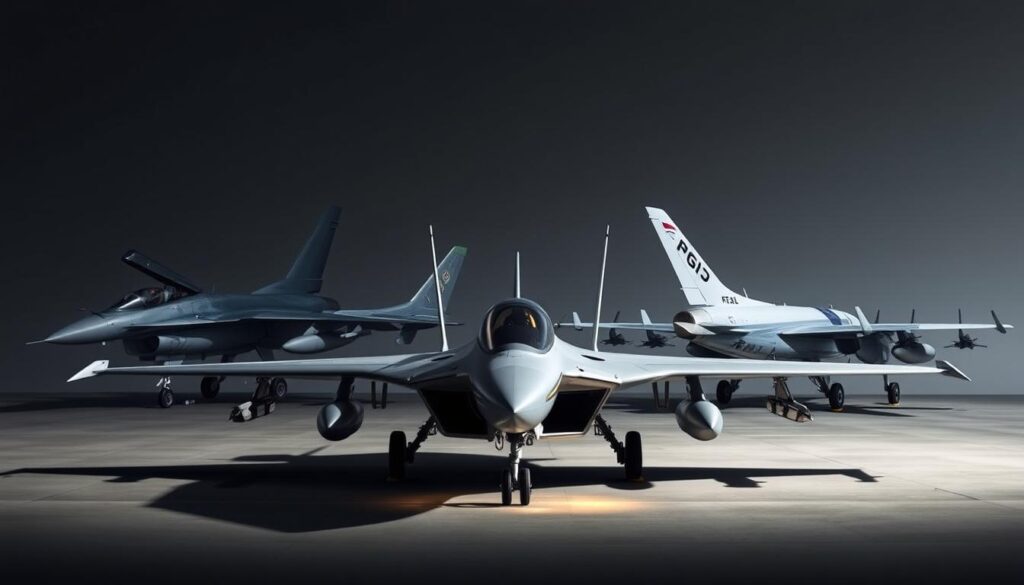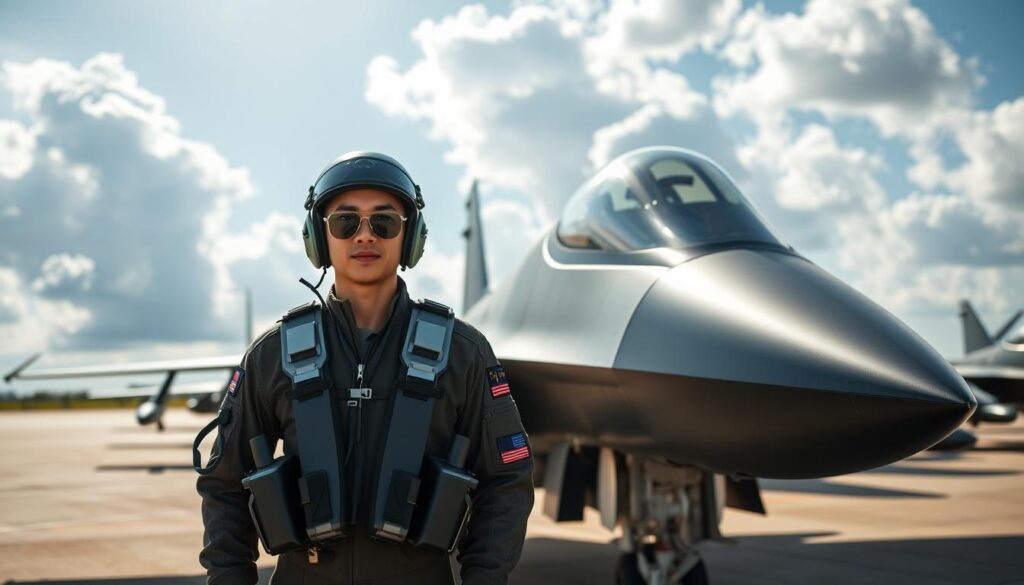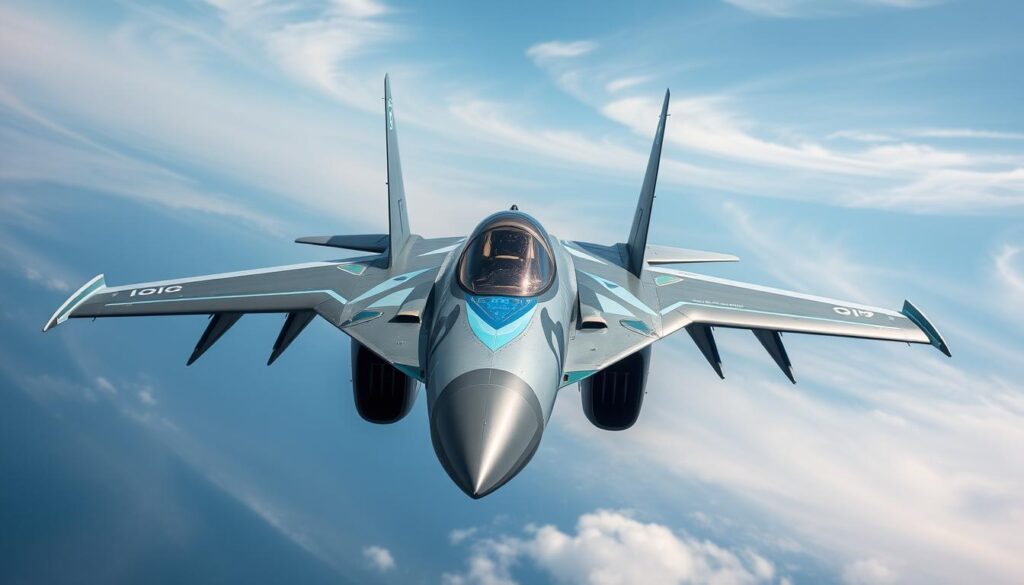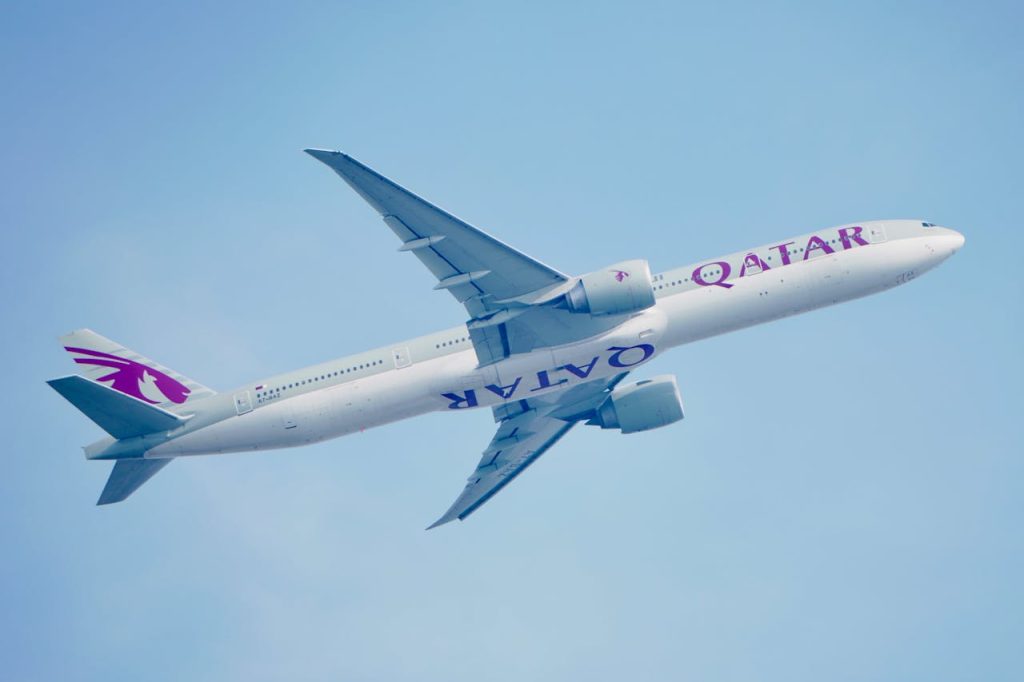Did you know Taiwan’s aerospace industry created a fighter jet in the 1990s? The AIDC F-CK-1 Ching-Kuo, or Indigenous Defense Fighter (IDF), is a key part of Taiwan’s military. It’s a multi-role combat aircraft.
We’ll dive into the history and design of this aircraft. It first flew in 1989 and started service in 1997. The aerospace industry advancements show Taiwan’s tech skills.
Key Takeaways
- The AIDC F-CK-1 Ching-Kuo is a multi-role combat aircraft developed by Taiwan.
- It is also known as the Indigenous Defense Fighter (IDF).
- The aircraft’s development was a significant milestone in Taiwan’s aerospace industry.
- The fighter jet made its first flight in 1989 and entered service in 1997.
- Taiwan’s defense capabilities were significantly enhanced with the introduction of this aircraft.
Introduction to the AIDC F-CK-1 Ching-Kuo
Taiwan showed it could make advanced military aircraft with the AIDC F-CK-1 Ching-Kuo. This was a big step for Taiwan’s air defense abilities.
Background and Development
The AIDC F-CK-1 Ching-Kuo was made because the U.S. wouldn’t sell Taiwan the F-20 Tigershark and F-16 Fighting Falcon. Taiwan wanted to make its own jet fighter. The Aerospace Industrial Development Corporation (AIDC) in Taichung, Taiwan, led the project.
Building the F-CK-1 Ching-Kuo was tough. Taiwan faced many technical and logistical hurdles. But they were determined to boost their air defense.
Key Objectives and Goals
The main goal of the AIDC F-CK-1 Ching-Kuo was to create a top-notch military aircraft for Taiwan’s defense. The main aims were:
- To make a fighter jet with the latest avionics and combat skills.
- To improve Taiwan‘s air defense with its own tech.
- To be able to make military aircraft on its own.
Taiwan wanted to make its air defense stronger. They also wanted to not depend so much on foreign military gear.
Design Features of the AIDC F-CK-1
The AIDC F-CK-1 Ching-Kuo is a top-notch example of defense technology. It combines sleek design with cutting-edge avionics. Its design draws from various fourth-generation fighter styles.
The IDF’s design is a mix of an F-18 and an F-16. It has the body and controls of an F-16. Yet, its twin engines and “jelly bean” intakes are more like an F-18. This unique blend boosts its performance.
Aerodynamic Structure
The F-CK-1’s aerodynamic design is key to its combat success. Its twin-engine setup improves its speed and agility. The aircraft also has high stability, essential for a fighter.
- High angle of attack capability
- Advanced flight control systems
- Aerodynamic enhancements for improved agility
Avionics and Technology
The F-CK-1’s avionics and technology are at the forefront of aviation technology. It has an advanced radar system. This allows it to spot and attack targets effectively.
| Avionics Feature | Description | Benefit |
|---|---|---|
| Advanced Radar System | Capable of detecting multiple targets | Enhanced combat effectiveness |
| Digital Flight Control System | Provides precise control and stability | Improved maneuverability |
| Integrated Communication Systems | Facilitates secure and efficient communication | Enhanced situational awareness |
The F-CK-1’s design and tech make it a powerful tool in air defense today.
Specifications of the AIDC F-CK-1
The AIDC F-CK-1 Ching-Kuo is a standout in aircraft manufacturing. It has impressive dimensions and performance. Here are the details of its specifications.
Dimensions and Weight
The AIDC F-CK-1 Ching-Kuo is long at 14.21 meters. Its wingspan is 9.46 meters, and it stands tall at 4.72 meters. It can take off with a weight of 12,247 kilograms, making it a powerful aircraft.
Performance Metrics
It’s powered by two ITEC TFE1042-70 turbofan engines. This boosts its performance. The specs of the AIDC F-CK-1 Ching-Kuo show its effectiveness in operation.
| Specification | Value | Unit |
|---|---|---|
| Length | 14.21 | meters |
| Wingspan | 9.46 | meters |
| Height | 4.72 | meters |
| Maximum Takeoff Weight | 12,247 | kilograms |
| Engines | 2 x ITEC TFE1042-70 | Turbofan Engines |
The AIDC F-CK-1 Ching-Kuo is key in the Taiwanese military industry. Its advanced design and capabilities make it a valuable asset.
AIDC F-CK-1 Ching-Kuo Variants
The AIDC F-CK-1 Ching-Kuo comes in many variants, showing its ability to handle different combat tasks. We’ll look at the various models and what they can do.
Single-Seat vs. Two-Seat Models
The F-CK-1 Ching-Kuo has both single-seat and two-seat versions. The single-seat model is for combat, and the two-seat is for training.
Key differences between the models include:
- Seating capacity
- Training capabilities
- Combat readiness
| Feature | Single-Seat Model | Two-Seat Model |
|---|---|---|
| Primary Use | Combat Missions | Training |
| Seating Capacity | 1 pilot | 2 pilots |
| Combat Readiness | High | Moderate |
Weapons Systems and Capabilities
The F-CK-1 Ching-Kuo has many weapons, like air-to-air missiles and precision-guided munitions. This makes it useful in many combat situations.
The aircraft’s weaponry includes:
- Air-to-air missiles for defensive and offensive operations
- Anti-ship missiles for maritime strike missions
- Precision-guided munitions for high-accuracy strikes
The F-CK-1 Ching-Kuo’s flexibility and various variants make it a strong military aircraft.
Historical Significance of the AIDC F-CK-1
The AIDC F-CK-1 Ching-Kuo has been key in Taiwan’s defense. It marked a big step in the country’s aerospace industry. Its creation and use have greatly improved Taiwan’s air defense.
Role in Taiwan’s Defense
The AIDC F-CK-1 Ching-Kuo, or Indigenous Defense Fighter (IDF), was vital in Taiwan’s defense in the 1990s and early 2000s. It greatly improved Taiwan’s air defense, showing the country’s dedication to military updates. The aircraft was made to face the region’s growing tensions, showing Taiwan’s commitment to its defense.
Records show the IDF was crucial in Taiwan’s defense in the 1990s and early 2000s. This highlights its importance in Taiwan’s military plans. For more info, check the Wikipedia page on AIDC F-CK-1 Ching-Kuo. It gives a detailed look at the aircraft’s creation and use.
Impact on Regional Security
The AIDC F-CK-1 Ching-Kuo’s use had a big effect on regional security. It showed Taiwan’s ability to face threats, helping keep the region’s power balance. The aircraft’s role has shaped military plans and diplomatic ties in the area.
The AIDC F-CK-1 Ching-Kuo’s importance goes beyond its military role. It’s a major achievement in Taiwan’s aerospace industry. Its development has led to technological progress and growth, making Taiwan a significant player in the global aerospace field.
Comparison with Other Fighter Jets
The F-CK-1 Ching-Kuo is often compared to other fighter jets like the F-16 Fighting Falcon and Sukhoi Su-30. These comparisons help us see what each aircraft can do and what it can’t.
F-16 Fighting Falcon
The F-16 is a fourth-generation fighter known for its agility and combat skills. It can fly farther and carry more than the F-CK-1. But, the F-CK-1 has its own advantages, like better avionics and defense tech.
Here are some key points of comparison:
- Similarities: Both are fourth-generation fighters with advanced tech.
- Differences: The F-16 has a longer history and is used worldwide, while the F-CK-1 is mainly for Taiwan.

Sukhoi Su-30
The Sukhoi Su-30 is a twin-engine fighter known for its long range and heavy payload. It can fly farther and carry more than the F-CK-1. This makes it good for different missions.
The main differences are:
- The Su-30 has a longer range and can carry more weapons.
- The F-CK-1 has less range but is made for Taiwan’s defense needs.
Even though the F-CK-1 Ching-Kuo may not be as good as the F-16 or Su-30 in some ways, it was made for Taiwan’s specific needs. It shows Taiwan’s commitment to its defense technology.
The Manufacturing Process
The making of the AIDC F-CK-1 Ching-Kuo showed Taiwan’s growth in aviation technology. It was a complex mix of different industries and new tech.
Key Industries Involved
The F-CK-1’s production needed many industries, like aerospace manufacturing, defense electronics, and precision engineering. The Aerospace Industrial Development Corporation (AIDC) teamed up with both local and global partners to make the plane.
Experts said, “Working together was key to beating the tech hurdles of making a top-notch fighter like the F-CK-1.”
Challenges Faced During Production
Even with progress in aircraft manufacturing, making the F-CK-1 faced big challenges. One big issue was putting together all the complex parts while keeping the plane’s performance and safety.
- Technical challenges in linking avionics and weapon systems.
- Handling the supply chain and working with international partners.
- Meeting strict quality and safety rules for military planes.
Beating these hurdles needed a lot of research and development money and a skilled team. The F-CK-1 Ching-Kuo’s success showed Taiwan’s skill in making advanced military planes. It was a big win for the country’s aviation technology field.
Training and Operational Use
To fly the AIDC F-CK-1 Ching-Kuo well, pilots need special training. The Republic of China Air Force has set up detailed training plans. These plans help pilots use the aircraft’s full potential.

Pilot Training Programs
The training for the AIDC F-CK-1 Ching-Kuo is tough but thorough. It prepares pilots for the challenges of flying this advanced fighter jet. Training covers both learning about the aircraft and getting flight experience. It focuses on skills needed for combat and tactical missions.
Pilots start with simulator training to learn about the aircraft’s systems. Then, they practice flying in real scenarios with experienced instructors watching over them.
Current Operators and Deployment
The AIDC F-CK-1 Ching-Kuo is used only by the Republic of China Air Force. Since 1997, it has been key to Taiwan’s air defense. The F-CK-1 Ching-Kuo has shown its worth in many situations.
Today, it plays a big role in keeping Taiwan’s skies safe. The aircraft and its pilots keep getting better to face new threats and tech.
Future Developments
Taiwan is working hard to boost its military strength. The AIDC F-CK-1 Ching-Kuo is a key focus. It has seen many upgrades to keep it up to date and ready for action.
Upgrades and Modernization Plans
The AIDC F-CK-1 Ching-Kuo is set for more upgrades. These will improve its avionics, weapons, and fight skills. The main goals are:
- Advanced avionics systems to improve situational awareness and combat capabilities
- Integration of new weapon systems to counter emerging threats
- Enhanced electronic warfare capabilities to stay ahead of potential adversaries
These changes are vital. They keep the aircraft relevant in today’s skies and ensure it’s a strong part of Taiwan’s defense.
Long-term Sustainability
Keeping the AIDC F-CK-1 Ching-Kuo flying for years means more than just upgrades. It also means tackling maintenance and logistics issues. This includes:
- Developing a robust maintenance schedule to minimize downtime
- Investing in training programs for pilots and maintenance personnel
- Securing a stable supply chain for spare parts and components
By tackling these areas, Taiwan can keep the AIDC F-CK-1 Ching-Kuo flying strong. It will continue to be a key part of Taiwan’s defense.
Conclusion: The Legacy of AIDC F-CK-1 Ching-Kuo
The AIDC F-CK-1 Ching-Kuo is a big step for Taiwan’s aerospace industry. It shows Taiwan can make and sell advanced military planes. This fighter jet has greatly helped Taiwan’s air defense.
Key Achievements
Taiwan made the AIDC F-CK-1 Ching-Kuo on its own. This means Taiwan doesn’t have to rely on other countries for planes. This success has helped Taiwan’s defense and grown its aerospace industry.
Importance in Air Defense
The AIDC F-CK-1 Ching-Kuo has made Taiwan’s air defense stronger. Its advanced technology makes it a strong defense against threats. Looking back, the AIDC F-CK-1 Ching-Kuo will keep being key to Taiwan’s defense.


